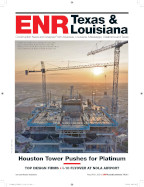Architecture 2030—a group bent on catalyzing the buildings sector to phase out carbon emissions related to the built environment—is picking up steam. Last month, the group issued its "challenge" to building product manufacturers to produce environmentally benign building products by 2030.
In 2006, Architecture 2030 unveiled a strategy to dramatically reduce global energy consumption and greenhouse-gas emissions through "low carbon" design. More recently, it released a road map to "zero emissions" for buildings—new construction and existing stock—by 2050.
 |
| MAZRIA |
One helpful tool, said Mazria, is the 2030 Palette, launched last year. The initiative sets forth the principles and actions to create low-carbon and resilient built environments worldwide and provides an online framework for the aggregation of all relevant information. "The framework is there, but it needs filling out," said Mazria. "We need to push this along."
Another Architecture 2030 push, launched last month, is called the 2030 Challenge for Products. It asks the global architecture, planning, design and building sector to adopt targets. The challenge says, "Products for new buildings, developments and renovations shall immediately be specified to meet a maximum carbon-equivalent footprint of 30% below the product-category average. The embodied carbon-equivalent footprint reduction shall be increased to: 35% or better in 2015; 40% or better in 2020; 45% or better in 2025; 50% or better in 2030."
Also at the AIA convention, which drew more than 19,000 registrants, the board of directors of the National Council of Architectural Registration Boards (NCARB) announced a proposal for an alternative path to licensure that would permit licensing upon graduation from an accredited architecture program.
The proposal, if implemented, could shave years off the licensure process by giving schools the option to roll internships and the licensure examination into their curricula. According to NCARB, 2012's class of licensees took an average of eight years to complete the process—not including school.
State member boards have until Sept. 5 to comment on the NCARB proposals. If the comments are favorable, NCARB's board of directors will vote at its September meeting on whether to implement the proposed changes, said Michael J. Armstrong, NCARB's CEO.
In other actions, the AIA issued updated model contract documents for design-build projects. One goal of the revised forms, last changed in 2004, is to provide flexibility for various design-build scenarios, said Ken Cobleigh, managing director and counsel, AIA Contract Documents. For example, the design-builder can be an architect, a contractor, a developer or a single-purpose entity. There is also an agreement, called C141, for the owner to hire an independent consultant—even through construction.
Reflecting Changes
The agreements are designed to protect the owner's criteria for a project; enhance the design in design-build, including a requirement for preliminary design by the design-builder; and reflect enhanced sustainability demands on projects as well as insurance industry changes. The insurance exhibit can be updated separately and before the next regular update in 2014, in the event the insurance industry changes.








